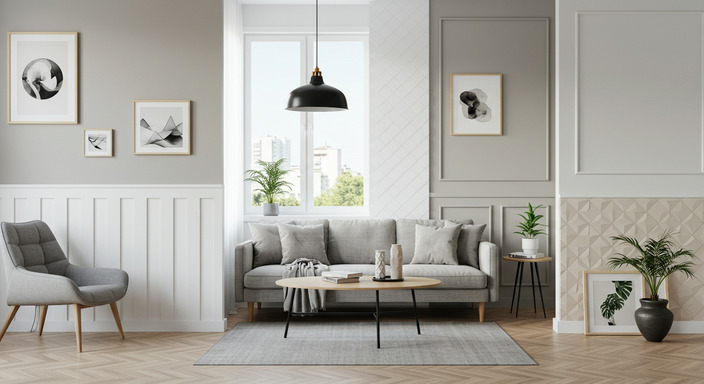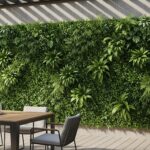The Timeless Appeal of Wall Paneling: Why Consider It?
Have you ever considered how significant a role walls play in our interior spaces? While often overlooked, the walls in any room can serve as a blank canvas waiting to be transformed with style and personality. Wall paneling has a timeless appeal that brings both texture and character to a room. Dating back centuries, wall paneling was initially employed to offer practical benefits such as insulation and protection from dampness. However, its evolution over time has made it an essential element in interior design. Today, the creative use of paneling can elevate the aesthetics of any space, from residential homes to commercial properties.
Traditional or contemporary, wall paneling offers an array of design opportunities. From adding a traditional wainscot to a modern geometric design, paneling has proven to be a versatile tool in achieving diverse interior themes. Furthermore, the materials and designs available have evolved significantly, enticing more homeowners and designers to incorporate paneling into their projects. But what makes wall paneling so enduringly appealing? Let’s delve into various wall paneling ideas that could transform your space.
Exploring Various Styles of Wall Paneling
The vast array of wall paneling styles can cater to any aesthetic preference or interior design goal. From classic to contemporary, here are some popular styles that could serve as both an inspiration and a guide to your next interior project:
| Style | Description | Best For |
|---|---|---|
| Wainscoting | A classic style originally used for insulation, featuring panels at the bottom portion of a wall. | Traditional and Colonial themes |
| Beadboard | Consists of narrow, vertical planks typically used in bathrooms and kitchens. | Cottage and farmhouse aesthetics |
| Shiplap | Known for its overlapping boards creating a smooth surface, adding a rustic charm. | Rustic and coastal designs |
| Geometric | Offers modern and edgy patterns through angular shapes. | Contemporary and avant-garde designs |
Understanding these styles allows you to make informed decisions about which type of paneling will best complement your space and personal taste.
Material Choices: Not Just Wood Anymore
In the realm of wall paneling, wood has traditionally been the material of choice, prized for its warmth and natural beauty. But today’s options have greatly expanded, offering a plethora of materials each with unique benefits. Natural wood panels can still add warmth and elegance to any room, but materials like MDF (Medium-Density Fiberboard) and PVC (Polyvinyl Chloride) offer alternatives that bring their distinct advantages.
“The best rooms have something to say about the people who live in them.” – David Hicks
MDF panels are a cost-effective alternative to wood, known for their smooth surfaces and resistance to warping. Additionally, MDF is easy to paint, offering flexibility for color schemes and designs. On the other hand, PVC panels provide excellent durability and moisture resistance, making them an ideal choice for bathrooms and kitchens. This material variety means you can choose a panel that not only matches your design aesthetic but also fits your practical needs.
Wall Paneling Benefits Beyond Aesthetics
Wall paneling provides several functional benefits beyond its visual appeal. One of the primary advantages of paneling is its ability to protect walls from scratches, dents, and other types of physical damage. This durability makes it an ideal solution for high-traffic areas. Moreover, certain panel materials provide insulation, which can lead to energy savings by keeping spaces warmer in the winter and cooler in the summer months.
Additionally, paneling can offer soundproofing benefits, making it a popular choice in settings where acoustics are a priority, such as music rooms or studios.
DIY vs. Professional Installation: What to Consider
1. Skills: Understanding the complexity of installing different types of paneling.
2. Tools: Assessing the requirement for specialized tools.
3. Time: Evaluating the time commitment for a DIY project versus streamlined professional installation.
4. Cost: Weighing the upfront costs against long-term benefits.
The decision between undertaking a DIY project or hiring professionals largely depends on your skill set, the tools you have access to, and the amount of time you can invest. While undertaking a paneling project might sound appealing, especially if budget constraints are a concern, professionals ensure a finish that stands up to scrutiny and wears well over time.
Color and Finish: Enhancing Your Paneling Experience
In choosing colors and finishes for your wall paneling, it is crucial to consider the existing furnishings and overall ambiance you wish to create. Light colors can make a room appear larger and more open, while darker tones can provide a sense of intimacy and coziness. When it comes to finishes, a high gloss finish can modernize a space, while a matte finish adds a traditional touch.
Whether you select a natural wood stain that highlights the material’s grain or vibrant paint that contrasts with the rest of your décor, the finish on your paneling can dramatically alter the perception of a room.
The Role of Texture in Wall Paneling
Texture plays an instrumental role in the visual appeal of wall paneling. The tactile aspect of paneling brings an additional layer of interest to wall surfaces. Smooth panels can lend a sleek, modern feel, whereas textured panels might evoke a sense of history or artistry. With techniques that include embossing and intricate carvings, textured panels can frame art or serve as statement pieces in themselves. Understanding the tactile component of your choice helps create an inviting environment that encourages interaction and appreciation.
Using Paneling to Create Focal Points
Wall paneling can be used strategically to draw attention and create focal points within a room. Installing paneling on a single feature wall can transform it into a dramatic statement piece that sets the tone for the entire space. Additionally, paneling styles with geometric or intricate patterns are particularly effective at creating focal points, providing depth and interest to the room. By carefully selecting the wall that should become the focal point, one can unify the design elements in the room and create a harmonious look.
Combining Paneling with Other Design Elements
Paneling should not exist in isolation but rather work in concert with the broader design framework of the room. Consider how paneling interacts with other elements, such as flooring, ceilings, and furnishings. Cohesion among these elements can make a space feel complete and harmonious. Embrace creativity by mixing different paneling materials or combining contrasting styles within the same area to sculpt a personalized ambiance that resonates with your taste.
FAQ – Common Inquiries
What are some primary materials used in modern wall paneling?
Besides traditional wood, modern paneling materials include MDF, PVC, and even metal or glass options for unique finishes.
Can wall paneling add value to a home?
Yes, wall paneling can enhance both the aesthetic appeal and functional utility of a space, potentially increasing a home’s market value.
Is wall paneling suitable for small spaces?
Absolutely. Vertical panel designs like beadboard can make small rooms appear taller and more spacious when used appropriately.
Does paneling require significant maintenance?
Maintenance depends on the material. Wood requires more attention, while MDF and PVC are easier to clean and maintain.
Can wall paneling be customized?
Most definitely. Paneling can be painted or stained to match specific tastes and complement existing decor schemes.
Conclusion
To conclude, wall paneling remains a versatile and effective way to upgrade interior spaces, offering an array of design possibilities and functional benefits. Whether renovating a single room or an entire property, incorporating paneling can elevate aesthetics, improve insulation, and offer soundproofing benefits. By understanding the variety of materials and styles available, you can make an informed decision that aligns with both your personal taste and practical needs. As an enduring feature of interior design, wall paneling continues to captivate with its elegance and practicality.
Meta Descrição: Discover the timeless appeal of wall paneling, a versatile tool in interior design. Explore styles, materials, and benefits in this comprehensive guide.







